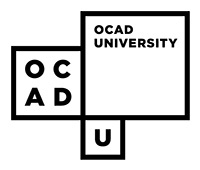Highlights
The OCADU Experiential Learning Centre was packed and the anticipation was high as DesignMeets returned with a rich, resonant evening featuring Andrew McLuhan, founder of the McLuhan Institute and grandson of media theorist Marshall McLuhan.
Media make us—and unmake us.
Marshall’s friend, John Culkin, famously paraphrased him, saying “we shape our tools and thereafter our tools shape us.” Designers don’t just build interfaces; they build environments—often unconsciously.
Design isn’t neutral.
Every layout, platform, and feature embeds values. Designers are implicated in the moral, psychological, and social effects of the systems they create.
We live inside what we make.
A phone isn’t just a device; it’s an environment. McLuhan reminds us that the medium isn’t the message—it’s the massage: it changes how we feel, think, and behave.
Understanding isn’t optional
If we don’t comprehend how our tools shape perception, someone else will: marketers, propagandists, platforms. Designers must become literate in their own influence.
The designer’s task? Wake people up.
In a world of hypnotic, frictionless interfaces, good design shouldn’t always be invisible. Sometimes, it should make you blink… and think.
The Medium, the Message, and the Mess We’re In
Andrew McLuhan doesn’t want to scare you. He’s not here to wag his finger or shame your smartphone use. But he does want you to notice what you’re swimming in. “We are the environment we live in,” he said, riffing on one of his grandfather’s most famous insights. “It’s not just the things we use. It’s what they do to us while we’re using them.”
That message landed loud and clear with the DesignMeets audience, many of whom spend their days building systems that people rely on, without ever seeing the long-term effects. McLuhan’s talk served less as a keynote and more as an excavation site. Every few minutes, he’d unearth another gem of media theory, brush it off, and invite us to sit with it a while. What happens when technologies no longer extend us but replace us? When tools no longer serve but subsume?
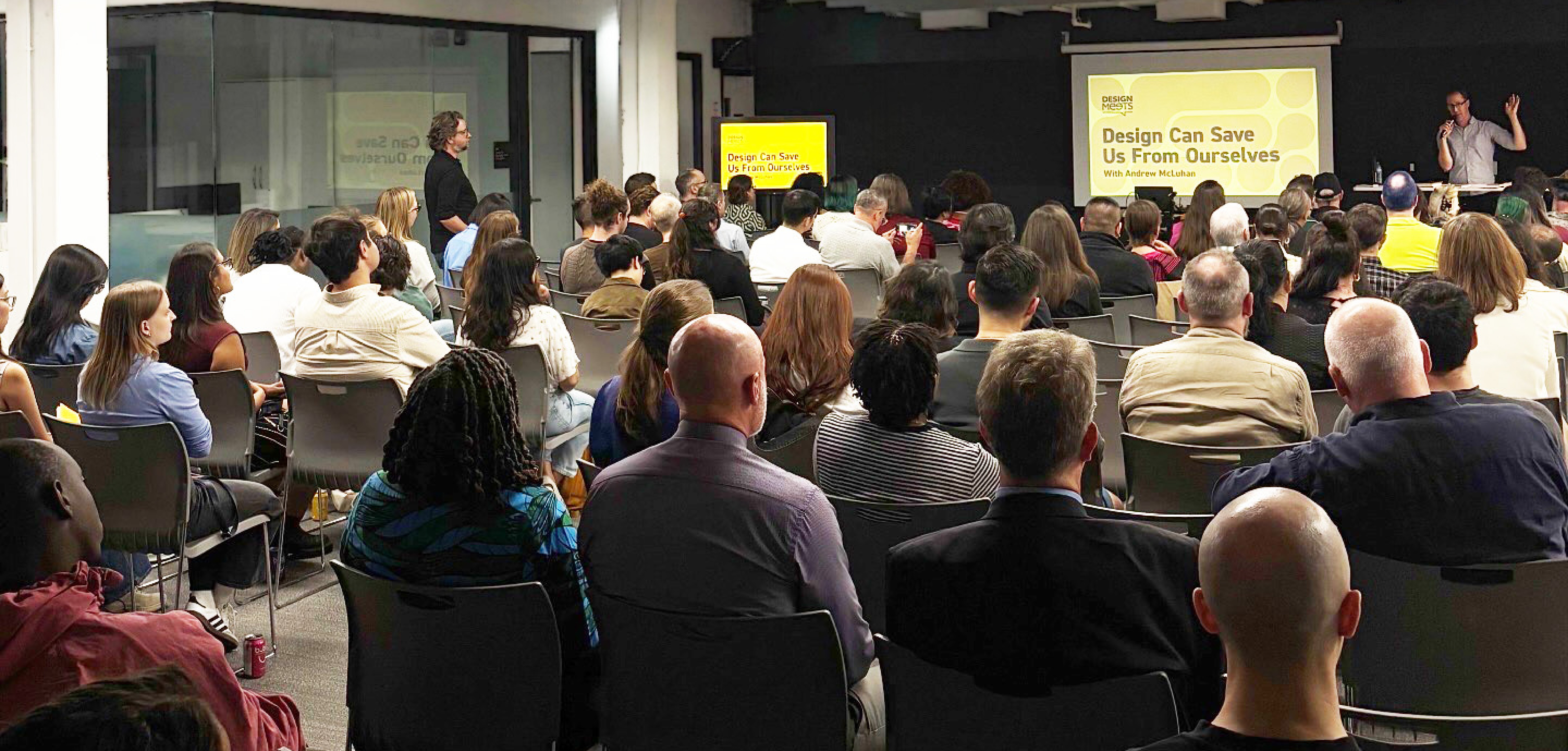
Design’s Unintended Consequences
“Design isn’t neutral,” he said plainly. “It’s not ‘just a layout’ or ‘just a product.’ It’s how people live.” In the age of seamless UX and ever-faster feedback loops, designers can easily lose sight of how their work affects emotions, cognition, and relationships. “When something works really well, it can be really dangerous,” he noted, with a dry pause. “Because then people stop noticing it.”
McLuhan’s tone often oscillated between gentle concern and subtle sarcasm. At one point, referring to tech companies and governments, to paraphrase his quip, The biggest gangs in the world are the ones that run the world. And they’re using your tools. It was a moment of dark comedy that landed hard because it is true.
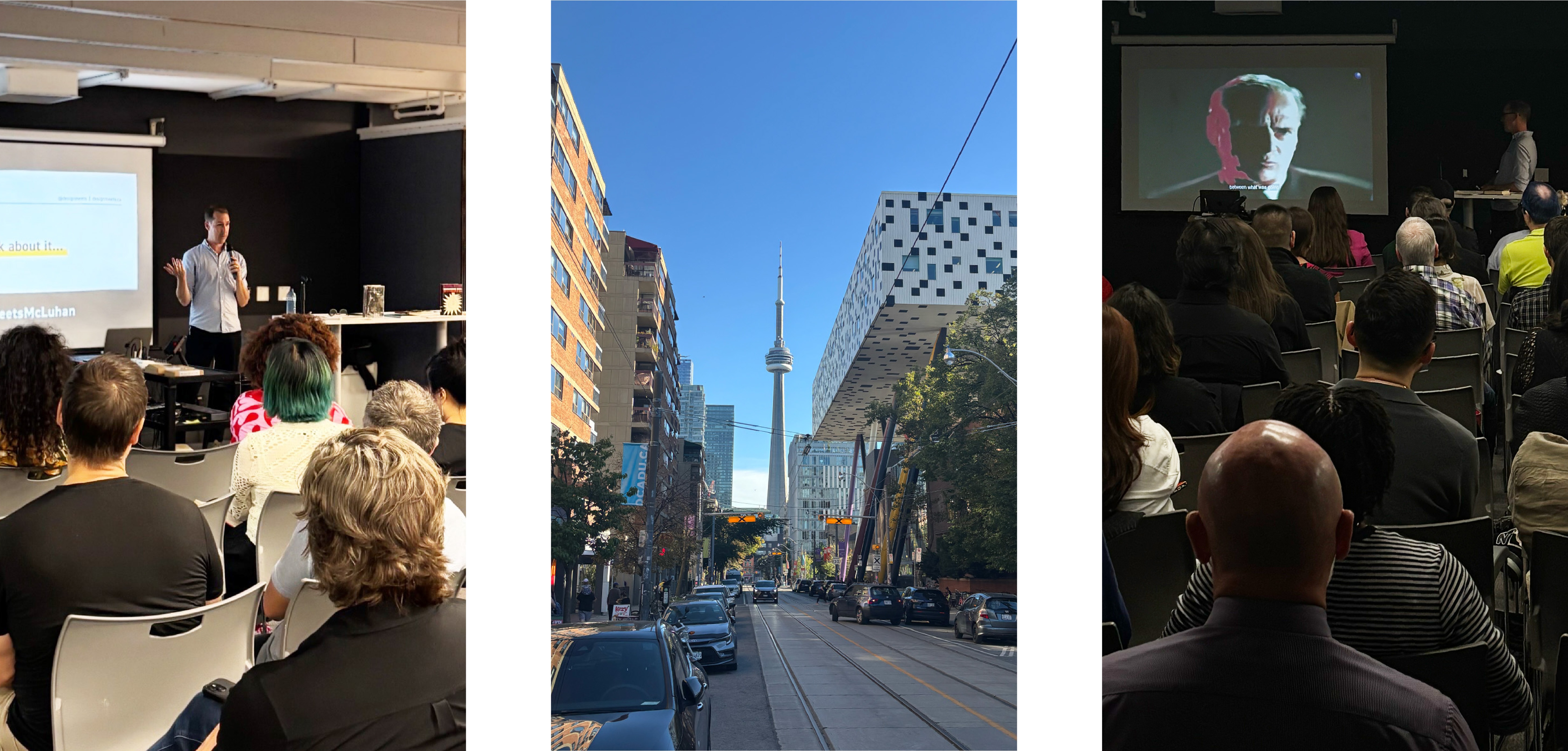
Seeing the Ground Beneath the Figure
Another core concept of the night was the idea of media as environments. We tend to notice content—the figure—but remain unaware of the medium itself—the ground. Andrew encouraged us to look past the obvious. “If you remove the figure, the ground finally comes into view.” He expanded on this idea. “An anti-environment is anything that makes the environment visible.”
This shift in attention—from foreground to background—is more than semantics. It’s a design practice. If we understand how media alter our senses, we can begin to account for the deeper effects of our tools as McLuhan noted, “Small changes in sensation can equal big changes in identity.”
Media Literacy for Designers
McLuhan emphasized that literacy now means more than reading words. “We need to become environmentally literate,” he said. Media is the environment. The designer is the gardener—or the demolition crew.
He encouraged designers to really look at the systems they’re part of: the assumptions, incentives, and unintended outcomes. His point, if you can’t explain what your design is doing to someone’s nervous system, maybe don’t ship it yet.
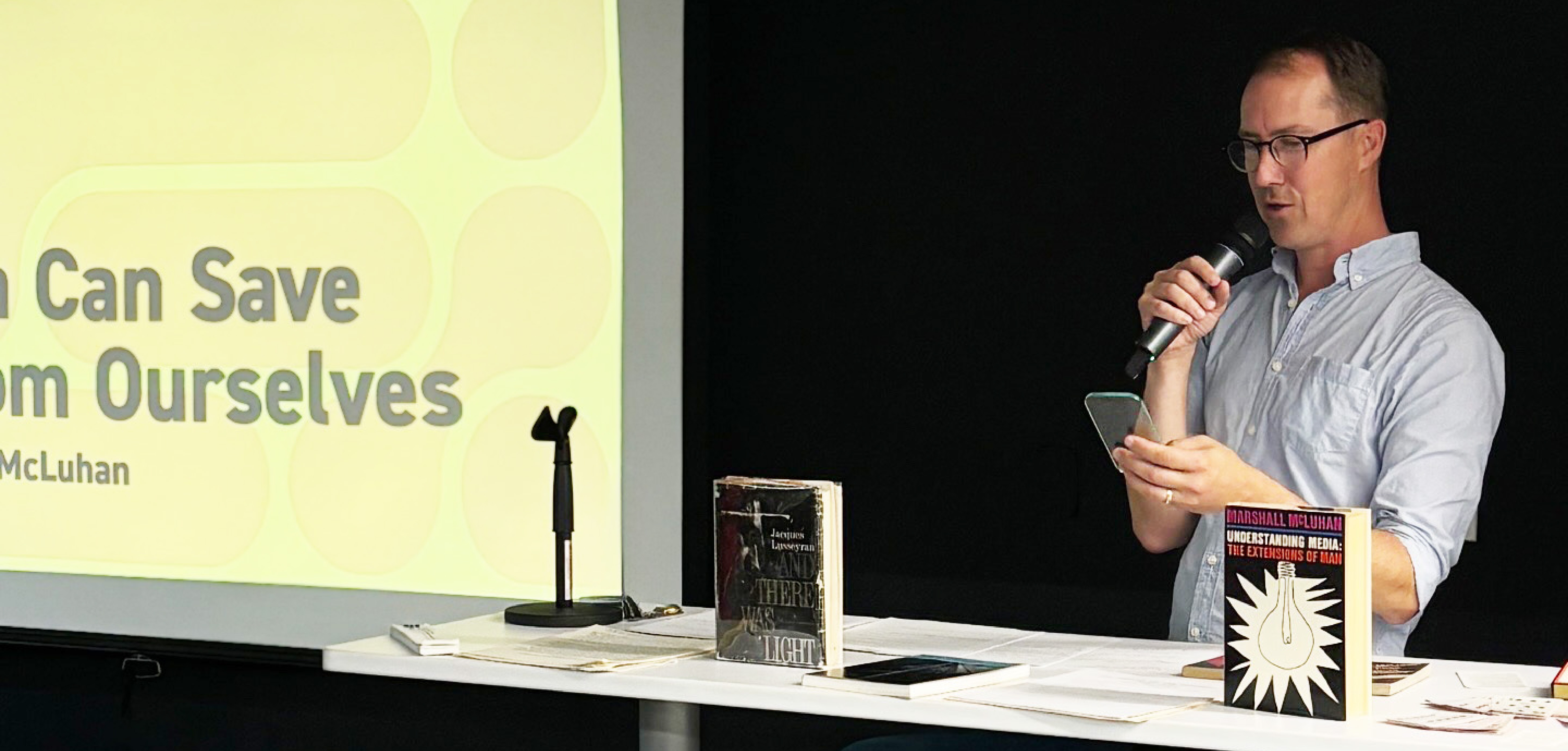
Design as Responsibility
When asked about the future of AI, Andrew didn’t warn of dystopia. He invited us to reflect. “You don’t have to accept technological determinism; you have to contemplate the situation.” Designers, he argued, have a unique role—not just to build systems, but to question them as he said, “There’s no inevitability if we’re willing to contemplate the situation.” The tools we normalize today will define the cultural defaults of tomorrow. In that light, attention isn’t just UX strategy—it’s ethics as he urged the audience to “Build for the ground, not just the figure.”
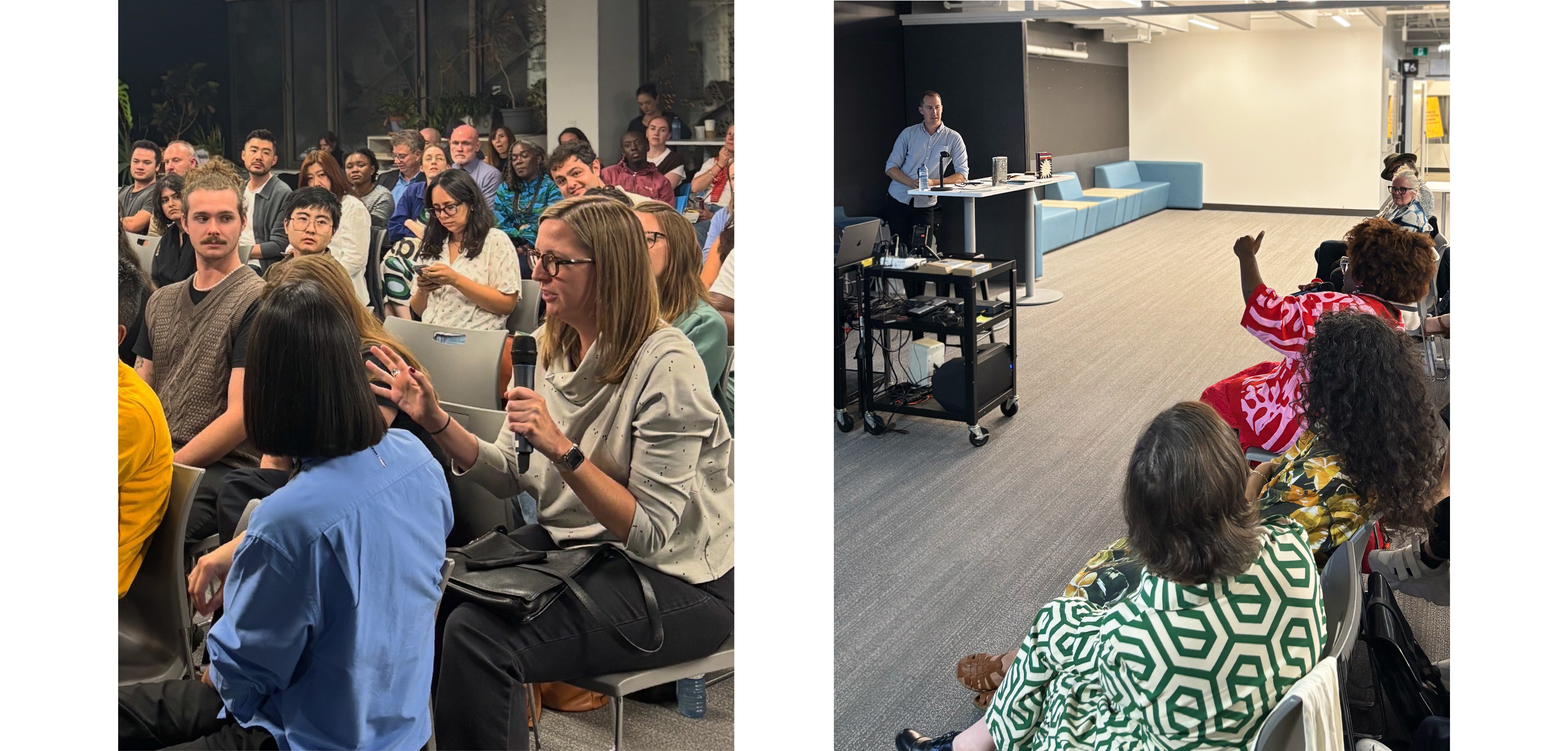
From Q&A to Conversation
The evening closed with a spirited Q&A that touched on everything from wearable tech to “wicked problems”. One participant asked how designers can advocate for reflection in a business culture obsessed with velocity. Andrew’s reply? Slowing down is itself a design choice. And regulation, far from being an obstacle, might be the very thing that lets innovation sustain itself. “If artists help us perceive, designers help us decide.”
It was a conversation that sparked more questions than answers… which is exactly the point. Because when we slow down, we can see more. When we see more, we can design better.
While some talks inspire you to do something, this one invited you to notice more. Noticing, McLuhan argues, is a form of resistance. A designer who questions the defaults, who asks “why this way?” can start to reshape what people take for granted.
He didn’t offer a 10-step guide to ethical interfaces or a toolkit for responsible innovation. Instead, he left us with a question: What world are you helping to build and can you live inside it?
In McLuhan’s world, that question isn’t rhetorical. It’s the point.
Further Your Understanding
—
About Design Meets
Proudly sponsored by Pivot Design Group, founded by Ian Chalmers, DesignMeets is a series of social events where the design community can connect, collaborate, and share ideas. Join us at a DesignMeets event to network, learn, and be inspired.
Sign up for our newsletter to stay in the loop.
